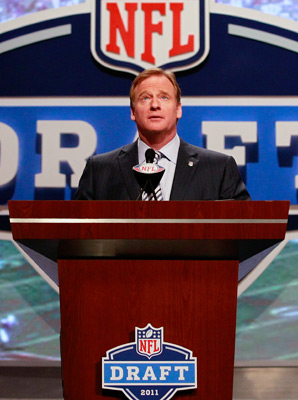 |
| The commish |
With the first overall pick in the 2013 craft beer draft,
the Sous Brewer selects…
Okay, so all bad puns that may or may not exist within
the title of this post aside (perhaps it’s a palindrome); the NFL draft is
currently underway up in New York. It got me thinking, what if there was a
craft beer draft? What if you had the number one overall pick?
It’s basically a question of “what is your favorite craft
beer?” This of course is a nearly impossible question to answer, as there are
so many wonderful craft beers out there to choose from. Even if you have a
favorite style, which might help to limit the field somewhat, you’re still
faced with the daunting task of selecting one out of a cast of thousands; a
brew that you can build your evening around. Perhaps you select based on best
available, or perhaps you select based on biggest need.
Then again, perhaps there is no wrong answer and this is all
much ado about nothing.
So how do people decide? What are the factors that we
use, whether they are conscious or subconscious, to choose between all of these
delicious options we have before us?
 |
| Yeah, that's right, whatever beer I want, whenever I want |
The first thing that comes to mind is availability, which
technically is a limitation that is imposed on us beyond our control and not a
determining factor that we use to help us choose. You could levy some degree of
control over availability by only dining in restaurants with expansive beer
menus, or choosing to shop at a specialty beer store over a grocery store, but
even then, you’re still at the mercy of someone else’s understanding of what
people like. In a perfect world, we could all have access to whatever beer we
want at any given time because we would have the computer that Jean Luc Picard
has in his stateroom that makes whatever food or drink you say into it. In a
perfect world, I would be paid $100 per word for these ridiculous blog posts of
mine.
An example of a distinguishing factor that we have a lot
more control over is the “support your local brewer” mentality. If offering patronage
to your native economy is something that gives you a sense of civic pride, this
is a great way to select one beer over another. The locals are becoming more
prevalent in most markets, but are often times smaller and more artisinal. For
this reason, they crave your business, and by selecting them, you keep your
money in the local economy. Everybody wins!
 |
| Brand loyalty from southeastern Pennsylvania |
Somewhat related to the “local” motivator is the “brand
loyalty” objective. Many people grew up on a particular brand of beer, or have
a loved one who works for a specific company. Perhaps you prefer breweries from
the city you were born in (which is kind of like extended-local brewer
support). Whatever the reason for your loyalty, assuming your preferred brewery
is available (there’s that pesky availability thing again), it can certainly
help you whittle down the options.
You could also pick based on a brewery’s, or even on a
beer’s, reputation. It’s very common for people to see a beer that they’re not
sure about, but since it’s made by a brewery that they know makes great beer,
they go for it, based on the reputation of the brewers. Similarly, perhaps they
read beer blogs and other brewing publications, and notice that everyone is
raving about a particular brew. Reputation is great way to separate the throngs
of available options on the beer shelf.
Speaking of people raving about beer, another determining
factor could be a recommendation. If you have friends like me in your life, you've probably got a list a mile long of “beers you have to try.” We beer
people love to share our experiences (obviously), so if you’re looking for
someone to make the choice for you, all you have to do is ask.
 |
| Most people will never see this Untappd badge, awarded for drinking 2,500 unique beers |
The final motivator that I will mention here is probably
my favorite… the “ I've never had this beer before” consideration. This one
speaks to the inner-adventurer in all of us. This is a style of beer selection
that has been propped-up by the Untappd app on our smart phones and hand-held
devices, which has created a legion of beer drinkers who are always on the
lookout for the ever-elusive unique check-in. When you are trolling the aisles
at the beer store looking specifically for beers you've never had before, particularly
if you’re checking your Untappd account to make sure, you know you've become
what I affectionately call a beer nerd. It’s okay to admit it.
There are, of course, many other motivating factors at
play that lead a person to select one brew over another (IE: label art, mood,
cleverness of the name, etc.). Whichever method you are using, as long as it
helps you narrow down the potential beers, it works. As long as you don’t wind
up in the hypothetical situation of having to select the first overall pick in
a craft beer draft of sorts, in which case I don’t know what to tell you. Trade
down?
Here’s to craft-brewed happiness… Cheers!




